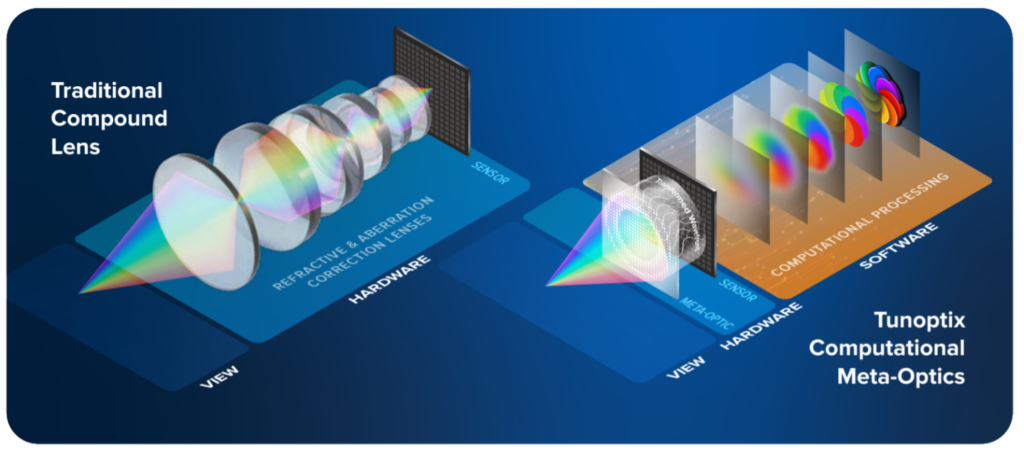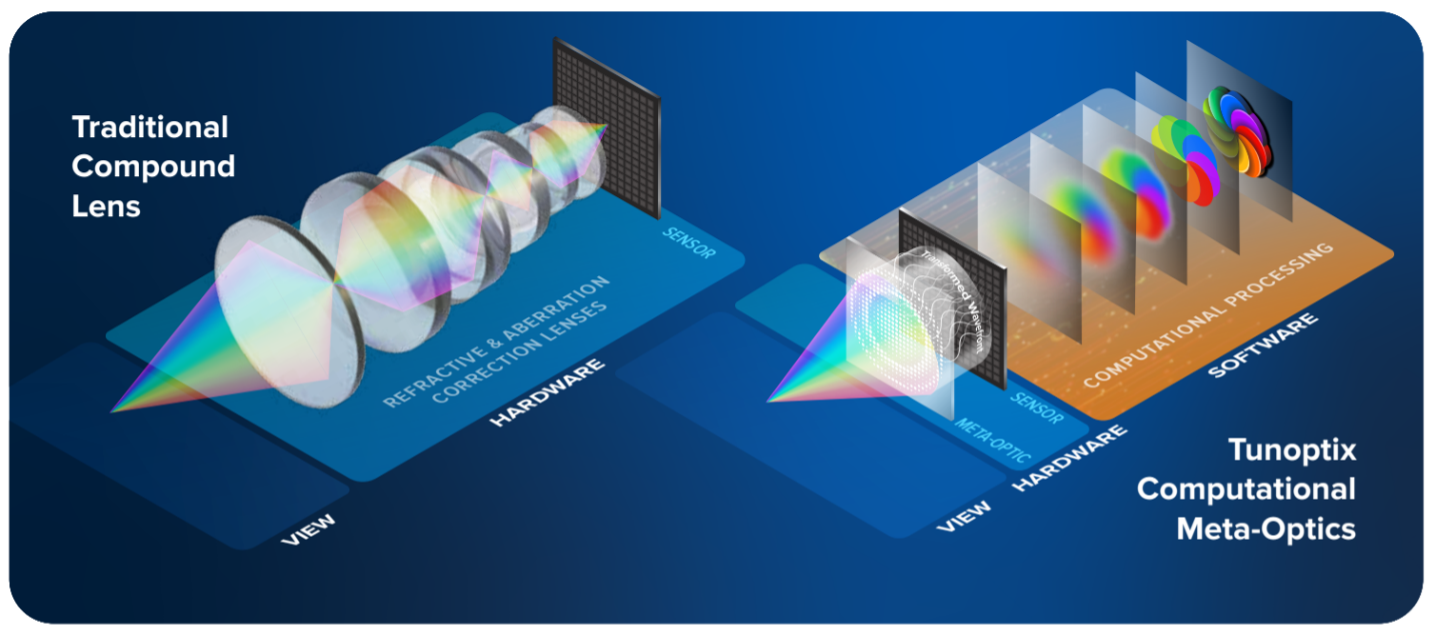
Tunoptix, a Seattle-based optics startup co-founded by University of Washington (UW) electrical and computer engineering professors Karl Böhringer and Arka Majumdar, was awarded a $1,500,000 Small Business Technology Transfer (STTR) Phase II grant from the Defense Advanced Research Projects Agency (DARPA). This highly competitive award provides funding for Tunoptix to continue developing next-generation imaging systems for use on satellites or aircrafts where weight, size and power are critical.
Lenses with large apertures, the opening through which light travels, are needed to capture images in low-light environments. The extremely large aperture lenses currently used by the defense and aerospace industries for surveillance and space exploration are generally very heavy and bulky. For example, the lens in the Hubble space telescope, which has an aperture of about 2 meters, is roughly 1,000 kilograms. Reducing the size, weight and power of such optical systems would significantly reduce their cost.
Meta-optics – engineered surfaces consisting of an array of nanoscale structures that can focus light – are emerging as a promising alternative to traditional lenses. Although meta-optics are lightweight and exceptionally thin (< 1mm), they cannot generate high quality color images. There are some solutions for full-color imaging, but all of them are generally limited to small apertures, about 100 – 200 micrometers in diameter. Tunoptix is developing large aperture (~1cm-10cm) metalenses combined with advanced AI-based image reconstruction software to capture high quality full-color images.

Tunoptix was previously awarded a $223k DARPA STTR Phase I grant to establish the feasibility of scaling their metasurface designs up to 10 centimeters. This STTR Phase II award will allow the company to begin fabricating its large aperture metasurface designs at the UW Washington Nanofabrication Facility (WNF), an open-access user facility that provides academic researchers and industry professionals access to nanofabrication tools and expertise.

A portion of the Phase II work will be carried out by the laboratory of Felix Heide, a computer science professor at Princeton University. Heide’s computational imaging lab will evaluate the imaging capability of Tunoptix’s metasurfaces and help optimize the algorithms used for image reconstruction.
While the focus of Tunoptix’s work for DARPA has been imaging in the visible light range, their approach can work for any wavelength. Tunoptix recently received a NASA Small Business Innovation Research (SBIR) Phase I award to develop a compact hyperspectral imaging (HSI) system using their meta-optics technology. Compact HSI systems will be especially useful in carrying out satellite-based and rover-based imaging of planetary surfaces, airborne remote sensing of coastal and oceanic regions, and inspection of mission-critical satellite systems in space.
“We are focused on revolutionizing the way optical systems are conceptualized, designed and manufactured,” said Majumdar. “Using well-established, high precision, low-cost semiconductor manufacturing techniques we are creating new, simple optical elements that will be critical for the evolution of optical design in the digital age. Moreover, by incorporating computational algorithms on the backend, we can improve image quality leaps and bounds over what was achievable using just meta-optics.”
For those interested in advancing this technology, Tunoptix is hiring several positions including an optical test engineer, software developer and AI consultant.
